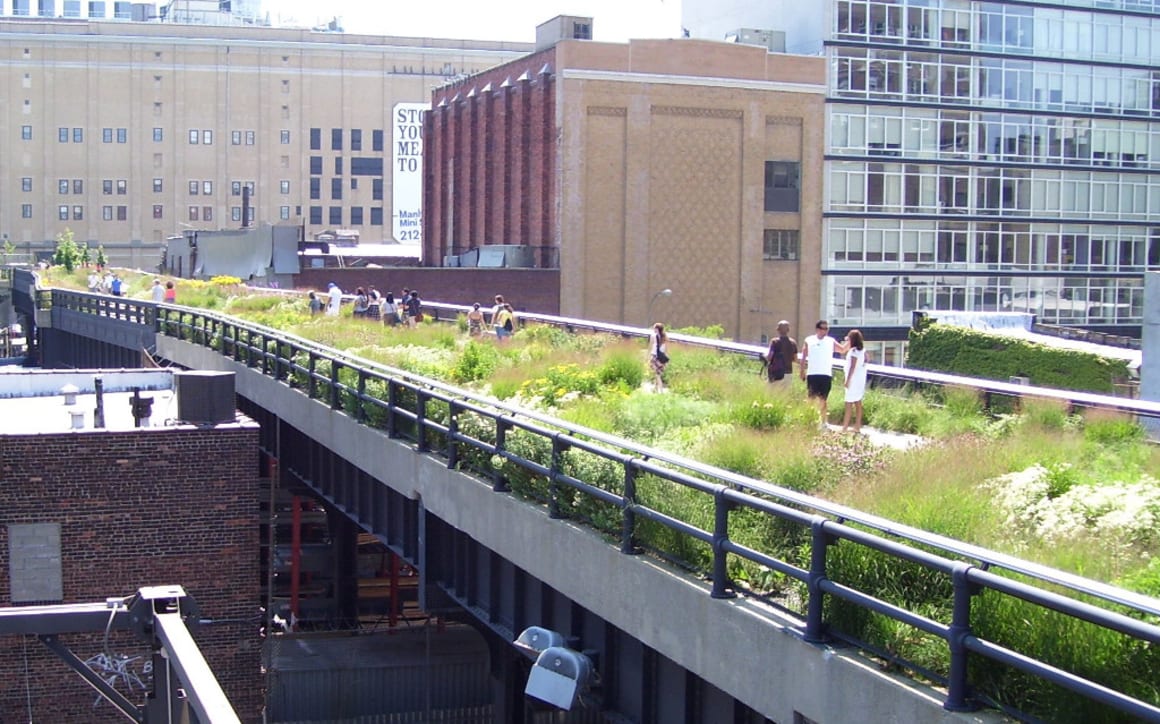Could Australia build a New York Highline?

By Kim Dovey, University of Melbourne
The celebrated New York Highline is one of the world’s urban redesign success stories. Formerly an abandoned railway, it is now an elevated park running past, over and through the buildings of Manhattan. Robert Hammond, co-founder and Executive Director of “Friends of the Highline”, was in Melbourne for Melbourne Knowledge Week telling the story of the project.
But it’s not just the Highline. Around the world urban transport provides opportunities to revitalise cities, and Australia can learn from this too.
Ongoing gentrification
When I visited the Highline in 2004 the derelict remnants of this former railway snaked through the meat-packing district. Trucks unloading fresh carcasses shared the sidewalks with new restaurants, galleries, boutiques and nightclubs. The fresh meat added authenticity to the fashion, food and fraternizing.
Ultimately the meat-packing would be replaced: this post-industrial makeover is now largely complete, and the Highline can be seen as part of this gentrification process.
It is scarcely news that former rail lines become available for new uses such as parks and bikeways. The wonderful “Promenade Plantée” in Paris is an earlier example of something similar. The former orbital rail line that encircles the inner city suburbs of Carlton and North Fitzroy in Melbourne has long been a popular linear park and bikeway. Yet the lessons here go far beyond the upgrading of disused rail tracks.
How transport revitalises cities
A less celebrated part of New York is “DUMBO” (Down Under the Manhattan Bridge Overpass). An industrial zone in Brooklyn previously inhabited by artists from the 1970s, the area was steadily redeveloped with a new waterfront park and a great view of Manhattan.
This development is here because major transport infrastructure generally creates leftover spaces of low market value. Here, difficult industries and low-rent activities can flourish. Railways and difficult industries have long had an affinity because they can share the noise, vibration and dirt. Creative industries also move into spaces that are low-rent due to their proximity to railways or industry.
Could Australia do the same?
Rather than copy New York, a lesson for low-density Australian cities is to look for opportunities to redevelop over, around and under existing railways. We could even build new elevated rail.
We have traditionally managed the noise and vibration of railways by creating extensive easements and buffer zones. Yet new rail technologies and forms of encasement can make such leftover spaces much more livable than they once were. When noise and vibration is reduced, then the positives of being near a train station can make such spaces highly attractive.
Many existing railways travel through excavated cuttings. These could be roofed to provide both development opportunity and linear parks.
Creating opportunities
This is not just a matter of taking advantage of leftover spaces, but also one of creating more of them. We can do this through investing in public transport.
Our low-density suburbs are replete with level crossings. These embody the most glaring of urban dilemmas: the more we increase the frequency of trains the more we block the car and bus network. Erasing these level crossings, by burying them or elevating them, would do far more to ease traffic than any road tunnels or freeways.
Redesigning level crossings will also help Australia’s cities transfer to a more transit-based, low-carbon future. While underground rail is often the best solution, it is very expensive. Elevated rail is more affordable and less disruptive to existing services. If elevated rail is well designed it can increase rather than harm the local amenity.
There is something of an irrational fear of designing elevated rail in Australian cities. To be sure, the danger, noise and vibration need to be managed, but the sight of the train is not a problem and our proximity to it is a significant benefit.
Marginal uses around and under rail lines add spice and variety to urban life; they bring a social and functional mix to areas that are often socially homogenous and monofunctional. The recently redeveloped London Overground has all kinds of activity - gyms, sporting fields, artist studios, industry, offices and housing - located both under and within ten metres of the mostly elevated line.
The obvious lesson from the Highline lies in the opportunities that emerge when trains are removed from the city. But the task for Australian cities lies in adding more of them and in resolving the level crossing issues.
The deeper lesson lies in how wonderful the relationship between trains and cities can be if the urban design is good enough. Linear parks are great but real railways are even better.
Robert Hammond spoke on Wednesday 30th October at the Melbourne Town Hall as part of Melbourne Knowledge Week.
Kim Dovey does not work for, consult to, own shares in or receive funding from any company or organisation that would benefit from this article, and has no relevant affiliations.
![]()
This article was originally published at The Conversation. Read the original article.